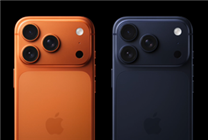Summary
- Material Shift: The iPhone 17 Pro’s transition from titanium to aluminum alloy may enhance heat dissipation and reduce weight.
- Performance Impact: Improved thermal conductivity is essential for user experience, particularly in high-performance devices.
- Material Selection: Choosing materials involves finding the optimal solution rather than a one-size-fits-all answer.
In a recent discussion regarding the iPhone 17 series, Duan Jichao, the technical director of Ideal Automobile Materials, shared insights on Apple’s controversial decision to transition from titanium alloy to aluminum for the iPhone 17 Pro. This choice has sparked debates about whether it’s a backward step or a well-informed decision.
Duan posits that switching back to aluminum alloy is, in fact, a savvy move. He highlights that aluminum possesses superior thermal conductivity, which is over 30 times that of titanium alloy. This significant difference in heat dissipation capabilities means that aluminum can prevent overheating, an essential aspect for maintaining a positive user experience, especially for a device known for high performance.
Moreover, aluminum’s density is approximately 60% lower than that of titanium, enabling a lighter overall build for the device. Lighter materials contribute not only to user comfort during extended use but also enhance the device’s portability—an increasingly critical factor in today’s mobile-centric world.
While the iPhone 17 Pro benefits from aluminum alloy, the iPhone Air will continue utilizing titanium. Duan explains that the ultra-thin design of the Air demands materials with higher strength and bending resistance. Titanium’s strength is more than double that of aluminum, and its modulus is over 40% greater. This high performance is crucial for supporting the Air’s design, which measures a mere 5.6 mm thick and weighs only 165 grams, making it Apple’s thinnest iPhone to date.
The decision to use aluminum for the iPhone 17 Pro underscores a vital principle in material science: there is rarely a "one-size-fits-all" solution. Rather, selecting appropriate materials is about identifying the "optimal solution" based on the specific requirements of the device.
The analysis provided by Duan Jichao not only sheds light on the engineering rationale behind Apple’s material choices but also emphasizes the broader implications of such decisions on user experience and product performance.
In conclusion, as technology evolves, manufacturers must remain agile in adapting to the most effective materials available. This iterative process involves constant reassessment of materials to ensure that devices like the iPhone not only meet aesthetic and ergonomic demands but also deliver top-tier performance. Whether through improved heat dissipation or reduced weight, the choices made today will shape the future of smartphones and consumer electronics alike.






